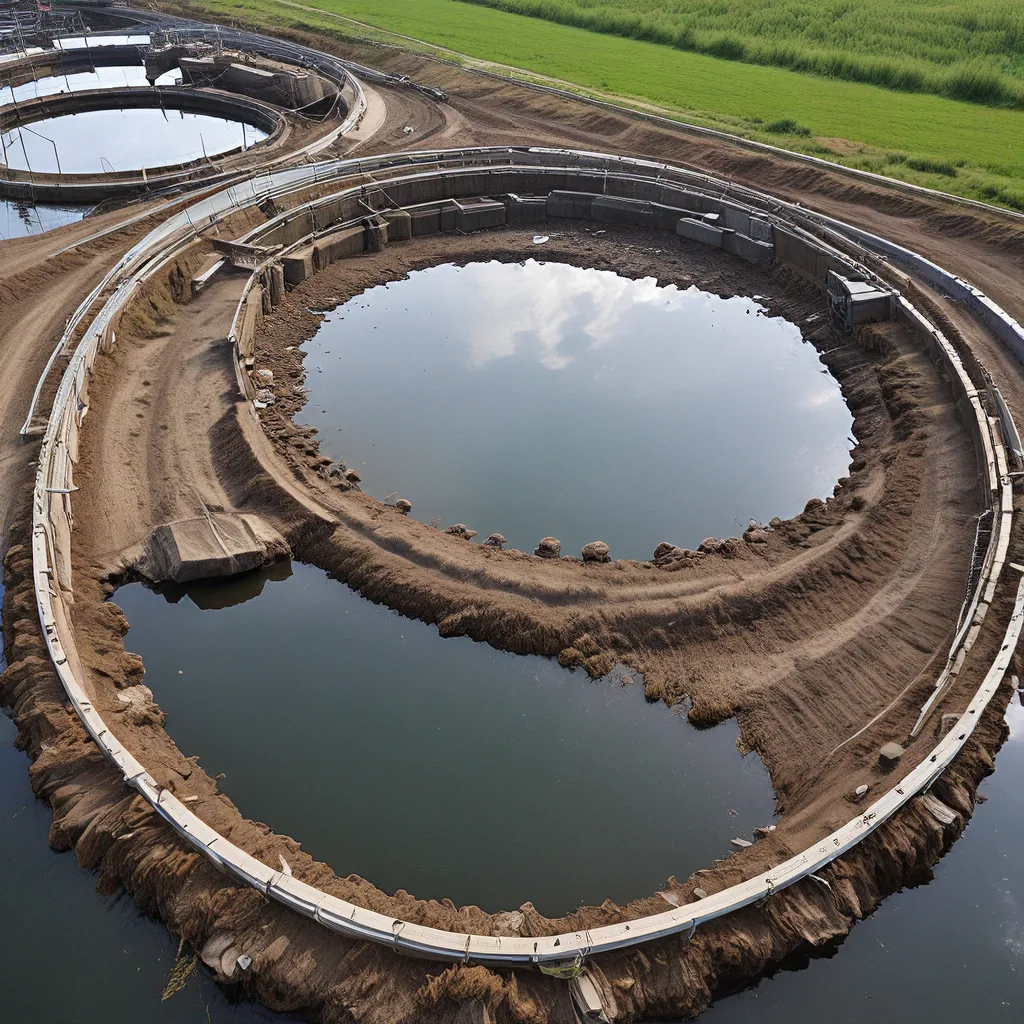
Ah, the wondrous world of wastewater treatment! It’s like a hidden treasure trove, just waiting to be unlocked. As I delve into this topic, I can’t help but feel a surge of excitement. You see, wastewater treatment isn’t just about flushing our troubles away – it’s about transforming the very fabric of our waste into something truly remarkable.
Embracing the Circular Bioeconomy
Imagine a world where waste is no longer seen as a burden, but rather as a valuable resource. That’s the essence of the circular bioeconomy, a concept that’s gaining traction around the globe. It’s all about closing the loop, taking what we once considered waste and turning it into something useful – be it energy, fertilizer, or even new products.
And let me tell you, the potential is staggering. According to a recent report, the global circular bioeconomy market is expected to reach a whopping $1.2 trillion by 2030. That’s a lot of zeros, my friend! But it’s not just about the money; it’s about creating a more sustainable future for all of us.
Wastewater Treatment: The Unsung Hero
Now, where does wastewater treatment fit into all of this? Well, my friends, it’s the unsung hero of the circular bioeconomy. Wastewater treatment plants are the gateways to unlocking the hidden treasure trove of our waste. They’re the alchemists, transforming the seemingly worthless into the truly valuable.
Just take a look at some of the incredible things these facilities can do:
Biogas Production: Wastewater treatment plants can harness the power of anaerobic digestion to produce biogas, a renewable energy source that can be used to power the plant itself or even be fed back into the grid.
Nutrient Recovery: The nutrients found in wastewater, like nitrogen and phosphorus, can be extracted and repurposed as high-quality fertilizers, helping to close the loop on our agricultural system.
Water Reclamation: By treating and purifying wastewater, these facilities can produce reclaimed water that can be used for irrigation, industrial processes, or even groundwater recharge.
Bioplastics and Biofuels: Certain types of bacteria found in wastewater can be harnessed to produce bioplastics and biofuels, reducing our reliance on fossil fuels.
And the list goes on! The truth is, wastewater treatment is the unsung hero of the circular bioeconomy, quietly transforming our waste into a treasure trove of sustainable solutions.
The Challenges and Opportunities
Of course, it’s not all sunshine and rainbows. Implementing a truly circular bioeconomy comes with its fair share of challenges. There are technological hurdles to overcome, regulatory barriers to navigate, and financial obstacles to surmount.
But you know what they say – where there’s a will, there’s a way. And let me tell you, the will is definitely there. Governments, industry leaders, and researchers around the world are doubling down on the circular bioeconomy, recognizing its potential to transform our world for the better.
Technological Advancements
Take the technological advancements happening in the wastewater treatment industry, for example. Innovative technologies like membrane bioreactors, advanced oxidation processes, and microbial fuel cells are revolutionizing the way we treat and recover resources from wastewater.
And the best part? These technologies aren’t just confined to the lab – they’re being implemented in real-world settings, delivering tangible results. In real-world settings, wastewater treatment plants are now capable of recovering up to 80% of the nutrients and producing enough biogas to power their own operations.
Regulatory Shifts
But it’s not just the technology that’s evolving – the regulatory landscape is shifting as well. Governments around the world are implementing policies and incentives to encourage the adoption of circular bioeconomy practices, recognizing the environmental and economic benefits they can bring.
In the United States, for example, the Environmental Protection Agency (EPA) has been actively promoting the circular bioeconomy, providing funding and technical support to help wastewater treatment plants unlock the value of their waste.
Financial Opportunities
And let’s not forget about the financial opportunities that come with embracing the circular bioeconomy. By recovering valuable resources from wastewater, treatment plants can generate new revenue streams, offsetting the costs of their operations and making the entire system more financially sustainable.
Investors and businesses are also taking note, pouring billions of dollars into the circular bioeconomy and recognizing the long-term benefits it can bring. It’s a win-win situation – good for the planet, good for the bottom line.
The Future of Wastewater Treatment
So, what does the future hold for wastewater treatment and the circular bioeconomy? I’m cautiously optimistic, my friends. The momentum is building, and the potential is limitless.
Researchers are exploring new and innovative ways to extract even more value from our wastewater, pushing the boundaries of what’s possible. And as technology continues to advance and regulations evolve, I believe we’ll see an explosion of creativity and innovation in this space.
But it’s not just about the technological and policy advancements. It’s about a shift in mindset, a fundamental change in the way we view our waste. We need to start seeing it not as a problem to be solved, but as a treasure trove of untapped potential.
And that’s where you come in, dear reader. By supporting the circular bioeconomy and championing the role of wastewater treatment, you can be a part of the solution. Together, we can unlock the hidden value in our waste and build a more sustainable future for all.
So, what are you waiting for? Dive in, explore the wonders of wastewater treatment, and join me in this exciting journey towards a circular bioeconomy. The future is ours to create, my friends. Let’s get to work!